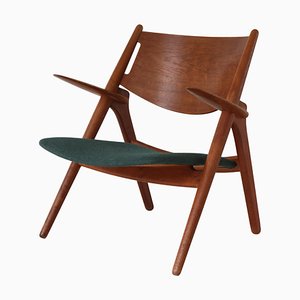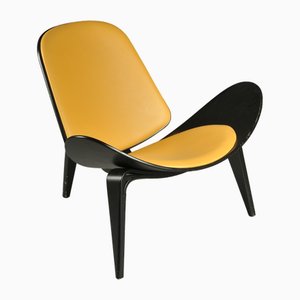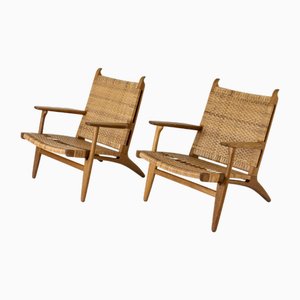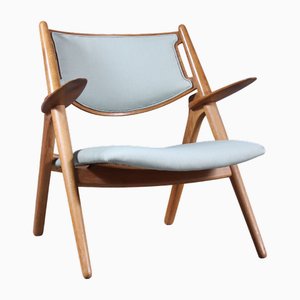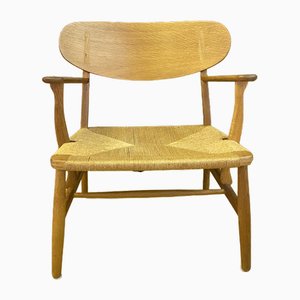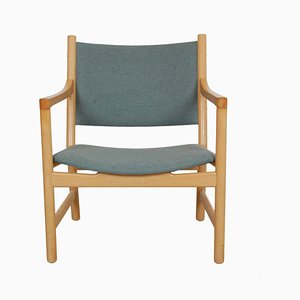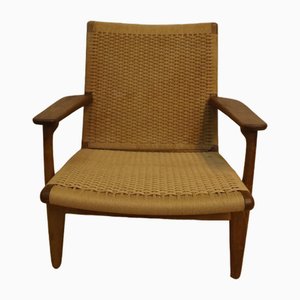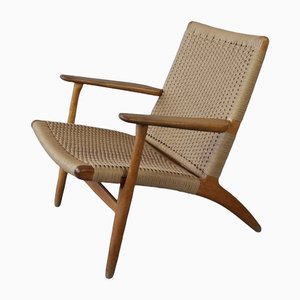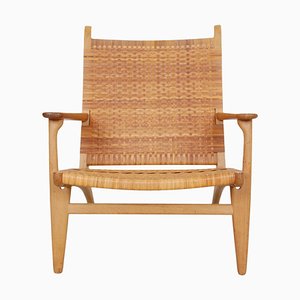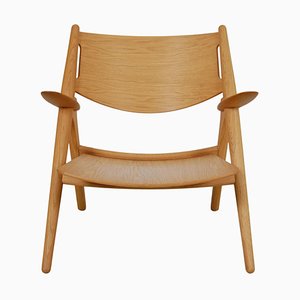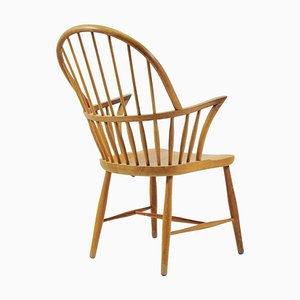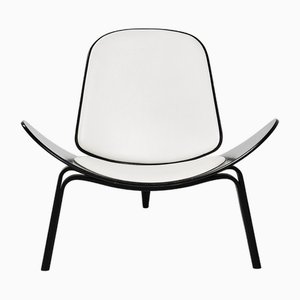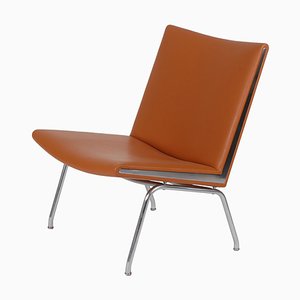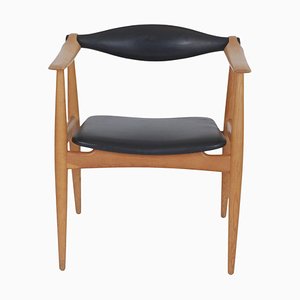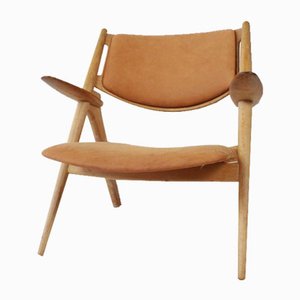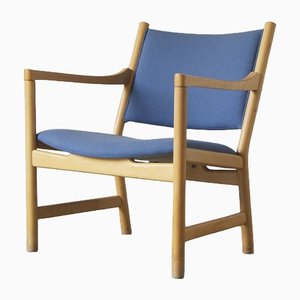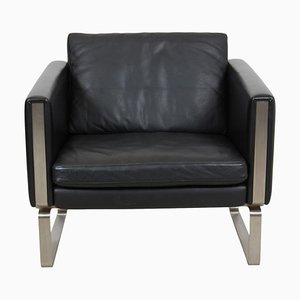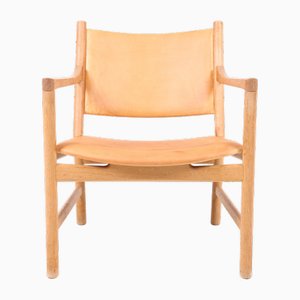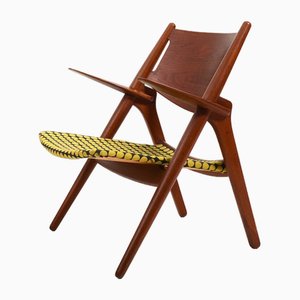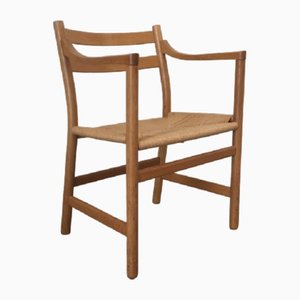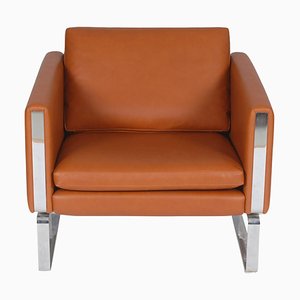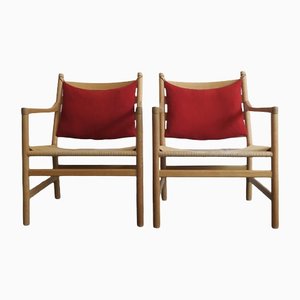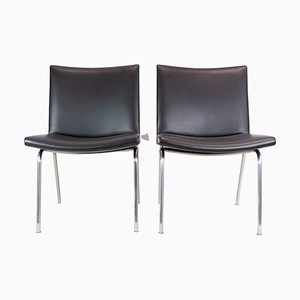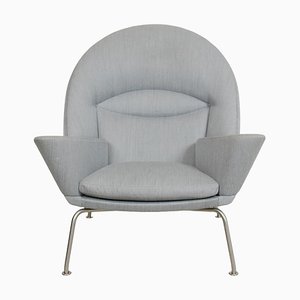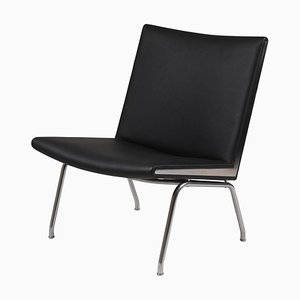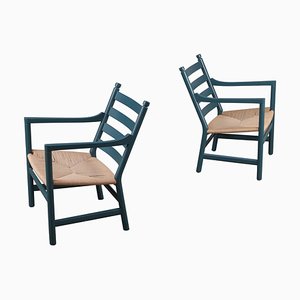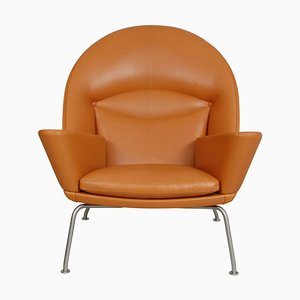
Danish furniture manufacturer Carl Hansen & Son is credited with launching the career of Hans J. Wegner, a designer who often is featured on lists of the most important and influential people in furniture design, and is commonly credited as a driving force in the midcentury Danish modern movement.
In 1908, Carl Hansen established a workshop in Odense. In the beginning, the company produced bespoke furniture including dining room sets and bedroom suites. Carl Hansen struggled financially during the 1930s-economic crisis, and in 1934, Carl’s son Holger Hansen took over the family business, renaming the company to Carl Hansen & Søn. With a new contract producing wooden cases for the American sewing machine manufacturer Singer, Holger was able to save the company from financial ruin.
Carl Hansen & Søn sales manager, Ejvind Kold Christensen, kept a close eye on the new breed of Danish furniture designers that emerged in the 1940s. Up until the mid-1940s, Danish architect Frits Henningsen designed for the company, including a series of Windsor chairs, some of which were produced until 2003. In 1949, Kold Christensen introduced Hans J. Wegner (1914-2007) to Holger Hansen, after seeing immense potential in the young and undiscovered designer.
Within the first three weeks with the company, Wegner designed the CH22 Lounge Chair, the CH23 Dining Chair, the CH24 Wishbone Chair, and the CH25 Easy Chair for Carl Hansen & Søn. This first collection, which was launched in 1950, would catapult both Wegner and Carl Hansen & Søn to international fame. The sculpturally bold designs of both the Wishbone Chair and the CH25 Easy Chair were a break from tradition, and were considered radical for their time. Wegner’s use of woven paper cord—a substitution material used during the war—for the seat of his CH25 was unprecedented. Holger’s decision to invest in work by a virtually unknown designer was a huge risk, but one that paid off for the manufacturer.
In 1951, the pair, along with Kold Christensen, formalized their partnership and formed a sales group called SALESCO. Active throughout the 1950s and ‘60s, SALESCO was a unique marketing team charged with promoting Hans J. Wegner’s work in Denmark and abroad, though they were also instrumental in the advancement of the mid-century Danish design identity in general. Other notable designs by Wegner for Carl Hansen & Søn include the CH29 Sawbuck Chair (1952); the three-legged CH07 Shell Chair (1963)—which was designed for MoMA’s now-iconic competition on low-cost furniture; the CH20 Elbow Chair (1956); and the CH88 Chair (1955)—which existed only as a prototype until it was produced in 2014 to celebrate the 100th anniversary of Wegner’s birth.
In 1962, shortly after Kold Kristensen left SALESCO to work with the promising new designer Poul Kjærholm (1929-1980), Holger passed away. The company was left to Holger’s widow, Ella Hansen, who safely steered the company through financial difficulty. In 1988, Ella’s son Jørgen Gerner Hansen took over management of the company, and in 2001, her other son Knud Erik Hansen assumed leadership. During the early-2000s, the company moved to a larger factory in Aarup, located outside Odense.
In 2011 and 2012, Carl Hansen & Søn bought the equally renowned Danish cabinet maker Rud. Rasmussen in Copenhagen and the furniture manufacturer P.J. Furniture in Store Heddinge.
Today, Carl Hansen & Søn is the largest manufacturer of furniture designed by Hans J. Wegner. Other historical and contemporary designers include Tadao Ando, Mogens Koch, Ole Wanscher, Kaare Klint, Thomas Bo Kastholm—son of the famous Danish architect Jørgen Kastholm, Poul Kjaerholm, and the Danish design duo Strand & Hvass.


